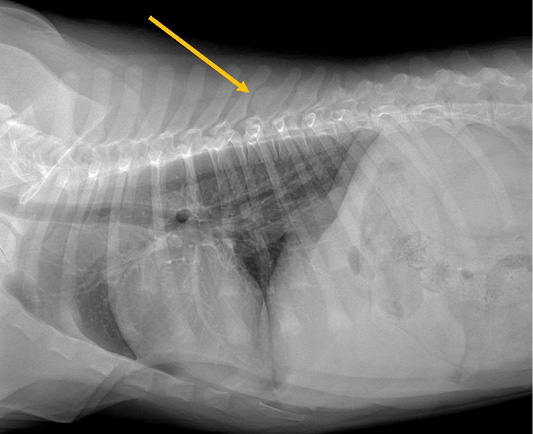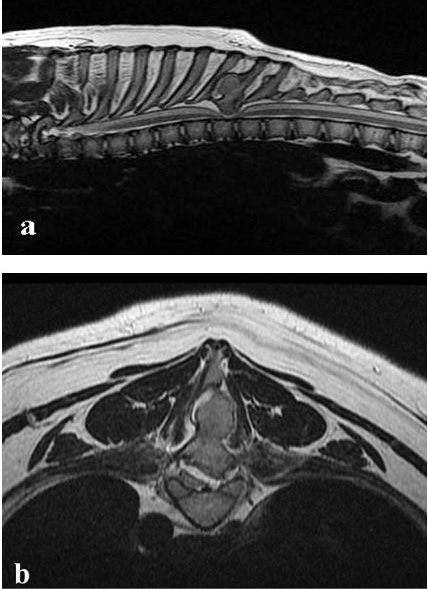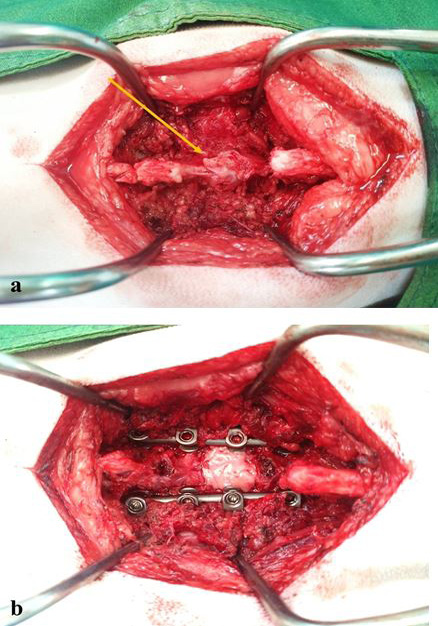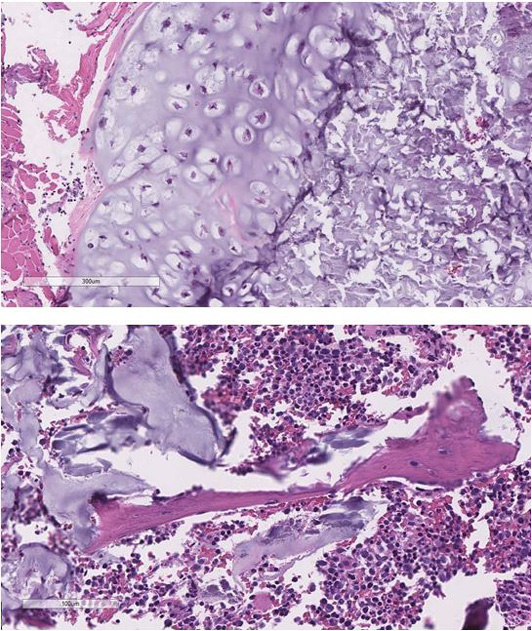Management of Spinal Osteochondroma in Young Golden Retriever Dog
Management of Spinal Osteochondroma in Young Golden Retriever Dog
Neeranoot Detcharoenyos1, Nakrob Pattanapon1, Soontaree Petchdee2*
Radiograph of thoracic (lateral view) with exostoses at T8-T9 dorsal spinous processes (yellow arrow).
T2-weighted sagittal (a) and transverse (b, c) MRI showing bony mass at T8 with severely compressed the spinal cord.
Intraoperative view of pathological exostoses located at T8 dorsal spinous process (a, yellow arrow). The modified pedicle screw-rod fixation was placed to T7-T10 for stabilization after exostoses were excised and the defect was covered with an autologous fat graft (b).
The microscopic finding presented a nodule of the cartilaginous cap with well-differentiated chondrocytes interspersed with bone spicules surrounded by marrow cells.









